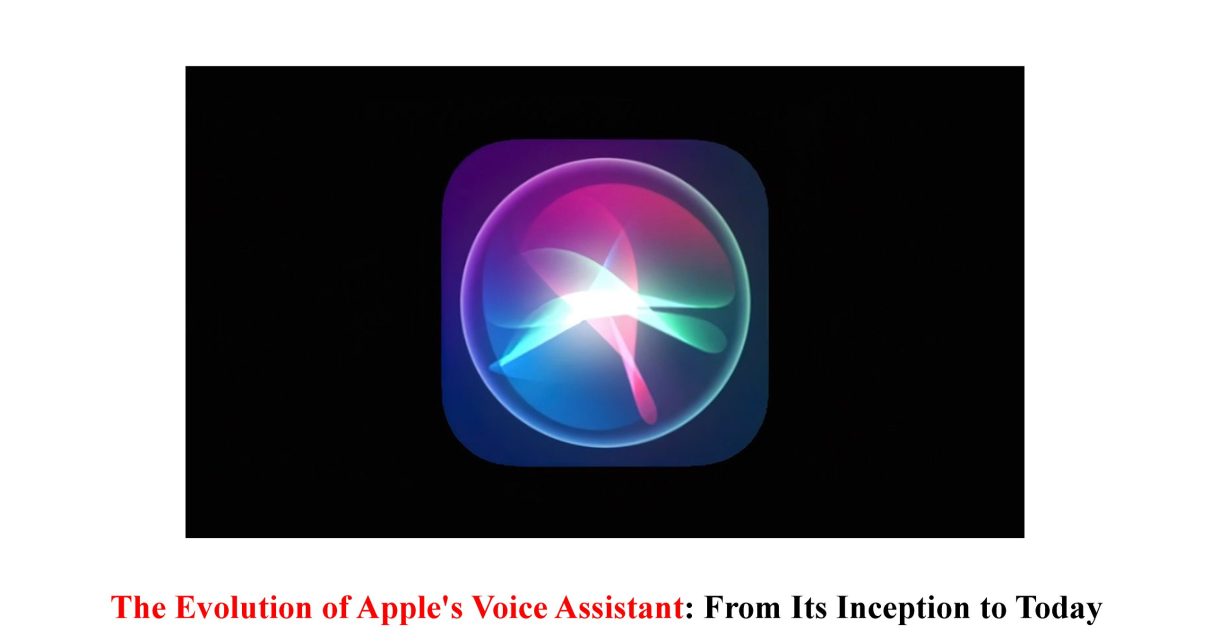Introduction to Apple’s Voice Assistant
Welcome to the fascinating world of Apple’s voice assistant, a revolutionary technology that has transformed the way we interact with our devices. From its humble beginnings to the cutting-edge features it boasts today, Siri has become an indispensable virtual companion for millions around the globe. In this blog post, we will delve into the evolution of Apple’s voice assistant, tracing its journey from concept to launch and exploring how it has revolutionized user experience and accessibility. Get ready to embark on a captivating exploration of Siri’s past, present, and future! So grab your favorite device and let’s dive in!
The Development of Siri: From Concept to Launch
In the early 2000s, Apple set out on a mission to create a voice-activated assistant that would revolutionize the way we interact with our devices. This ambitious project was initially known as “Project HAL,” inspired by the intelligent computer in Arthur C. Clarke’s novel “2001: A Space Odyssey.”
Apple began assembling a team of experts in artificial intelligence and natural language processing to bring their vision to life. The goal was to develop an assistant that could understand and respond to human commands in a conversational manner.
After years of research and development, Apple unveiled Siri at their annual Worldwide Developers Conference in 2011. It was introduced as an exclusive feature on the iPhone 4S, marking the beginning of a new era for voice assistants.
Siri quickly gained popularity among users who were fascinated by its ability to answer questions, perform tasks, and even engage in witty banter. Its launch sparked excitement and speculation about the potential future uses of voice technology.
Over time, Apple has continuously improved Siri’s capabilities through software updates and integration with other services. With each iteration, Siri became more proficient at understanding complex queries and providing accurate responses.
Despite facing competition from other voice assistants like Amazon’s Alexa and Google Assistant, Siri remains one of the most widely recognized voices in tech. According to recent estimates, it holds around 25% market share among virtual assistants worldwide.
One area where Siri has made significant strides is accessibility. By enabling hands-free interaction with devices for individuals with disabilities or limited mobility, it has opened doors for inclusivity within the technology realm.
Looking ahead, there are endless possibilities for how Apple’s voice assistant may evolve further. Improved contextual understanding, expanded language support, enhanced privacy features – these are just some areas ripe for exploration.
As technology continues to advance rapidly, so too will our expectations for what an AI-powered assistant can do. And with Apple’s commitment to innovation, it’s safe to say that Siri will continue
Advancements and Improvements over the Years
Advancements and improvements in Apple’s voice assistant have been significant over the years, as the company continually strives to enhance user experience and expand Siri’s capabilities. From its initial launch to the present day, Siri has undergone numerous updates that have made it smarter and more intuitive.
One notable advancement is the integration of machine learning technology into Siri. This allows the voice assistant to better understand natural language queries and provide more accurate responses. As a result, users can now ask complex questions or make specific requests with greater success.
Another improvement is Siri’s expanded functionality across different devices. Originally designed for iPhones, Siri now works seamlessly on other Apple products such as Macs, iPads, and even Apple Watches. This cross-platform integration makes it easier for users to access Siri wherever they are and whatever device they’re using.
Over time, Apple has also introduced proactive suggestions through Siri. The voice assistant can anticipate user needs based on their habits and preferences, offering useful information before being asked for it. For example, Siri might suggest nearby restaurants when it detects that a user is searching for dinner options.
Additionally, there have been advancements in third-party app integrations with Siri. Developers can now build applications that work directly with the voice assistant, allowing users to perform tasks within those apps using just their voice commands. This opens up a world of possibilities in terms of productivity and convenience.
Furthermore, improvements have been made in accessibility features for individuals with disabilities or special needs. Voice control options enable users to navigate their devices solely through vocal commands, making technology more accessible than ever before.
Competitors and Market Share
Apple’s voice assistant, Siri, may be one of the most well-known and widely used voice assistants in the market today, but it certainly faces some tough competition. In fact, there are several other major players in the voice assistant arena vying for consumer attention.
One of Siri’s biggest competitors is Amazon’s Alexa. With its integration into a variety of smart home devices like Echo speakers and Fire TV, Alexa has gained a considerable foothold in the market. Its ability to perform tasks such as ordering products online or controlling smart home devices has made it a popular choice among consumers.
Google Assistant is another formidable competitor that shouldn’t be underestimated. As an integral part of Google’s ecosystem, it benefits from access to vast amounts of data and information. This allows it to provide accurate answers to user queries and deliver personalized experiences across various devices.
Microsoft’s Cortana also competes with Siri in the virtual assistant space. Although primarily known for its presence on Windows computers, Cortana has expanded its reach to mobile devices as well. It offers features such as reminders, calendar management, and even integration with third-party apps.
In terms of market share, while Apple initially had a head start with Siri being integrated into iPhones since 2011 when it was first introduced on iPhone 4s-its competitors have caught up significantly over time. While exact figures can vary depending on different reports and sources available at any given time – Apple does not regularly disclose specific numbers related to Siri usage – all indications suggest that Siri still holds a significant portion of the voice assistant market share.
As technology continues to evolve rapidly within this field—bringing new advancements such as natural language processing (NLP) capabilities—the battle for dominance among these tech giants will likely intensify further in the future.
Impact on User Experience and Accessibility
Apple’s voice assistant, Siri, has had a significant impact on user experience and accessibility since its launch. With the ability to interact with your iPhone or other Apple devices using just your voice, Siri has transformed the way we interact with technology.
One of the most notable impacts of Siri is its contribution to accessibility. For individuals with disabilities or limited mobility, Siri provides a new level of independence by allowing them to perform various tasks without needing to physically use their device. From making phone calls and sending messages to setting reminders and controlling smart home devices, Siri empowers users with disabilities to navigate their digital world effortlessly.
Moreover, Siri’s natural language processing capabilities have greatly enhanced user experience across all Apple products. By understanding context and conversational cues, Siri can provide more accurate responses and anticipate user needs better than ever before. Whether it’s searching for information online, scheduling appointments in your calendar, or finding nearby restaurants – Siri makes these tasks faster and easier.
Additionally, as Apple continues to integrate Siri into more devices such as AirPods and HomePod speakers, users can access this powerful voice assistant hands-free in various settings – from commuting to exercising or even cooking in the kitchen.
The impact of Apple’s voice assistant on user experience is undeniable. It has made technology more accessible for all users while revolutionizing how we interact with our devices. With ongoing advancements in artificial intelligence and machine learning technologies, it will be exciting to see how Siri evolves further in enhancing both accessibility and user experience going forward.
Future Possibilities and Predictions
As technology continues to advance at an astonishing pace, the future of Apple’s Voice Assistant holds great potential for even more remarkable advancements. With each new iteration, Siri has become increasingly intelligent and intuitive, but what can we expect in the years to come?
One area where Siri is likely to excel is in its integration with other devices and platforms. As smart homes become more prevalent, imagine controlling every aspect of your living space simply by speaking commands to Siri. From adjusting the lighting to setting the temperature or even ordering groceries, voice control will revolutionize how we interact with our surroundings.
Furthermore, as artificial intelligence becomes more sophisticated, Siri could evolve into a true personal assistant capable of understanding context and anticipating our needs. We might see features such as proactive suggestions based on our habits or preferences.
In addition, advancements in natural language processing may enable Siri to have more natural conversations with users. This could mean engaging in deeper discussions or providing detailed explanations when asked complex questions.
Looking further ahead, there is also speculation that Apple may be working on developing their own smart glasses similar to Google Glass. If this comes true, it’s not hard to imagine Siri playing a central role in controlling these wearable devices through voice commands.
While it’s impossible to predict all the specific developments that lie ahead for Apple’s Voice Assistant, one thing is certain: continuous innovation will only enhance its capabilities and make it an indispensable part of our lives moving forward.
Conclusion
The evolution of Apple’s voice assistant, Siri, has been nothing short of remarkable. From its humble beginnings as a concept to becoming a widely used and trusted AI companion, Siri has come a long way.
Apple’s dedication to improving Siri is evident in the advancements made over the years. The introduction of natural language processing and machine learning algorithms has allowed Siri to better understand user commands and provide more accurate responses. The integration with third-party apps and services has further expanded its capabilities, making it even more versatile and useful.
However, competition in the voice assistant market is fierce. Rivals such as Amazon’s Alexa and Google Assistant have gained significant traction, challenging Apple’s dominance. While Siri continues to hold a respectable market share, there is no denying that other players are catching up quickly.
Despite this, Siri remains an integral part of the Apple ecosystem for millions of users worldwide. Its seamless integration with iOS devices ensures a consistent experience across various platforms. Additionally, its accessibility features have made technology more inclusive for individuals with disabilities.
Looking ahead into the future, there are endless possibilities for Siri’s development. With advancements in artificial intelligence and machine learning technologies on the horizon, we can expect even smarter and more intuitive interactions with our voice assistants.
In conclusion (without explicitly stating it), Apple’s voice assistant has come a long way since its inception. Through continuous improvements and adaptations to changing user needs, Siri will undoubtedly continue to evolve alongside technological advancements – solidifying its place as one of the leading virtual assistants in today’s digital landscape.



